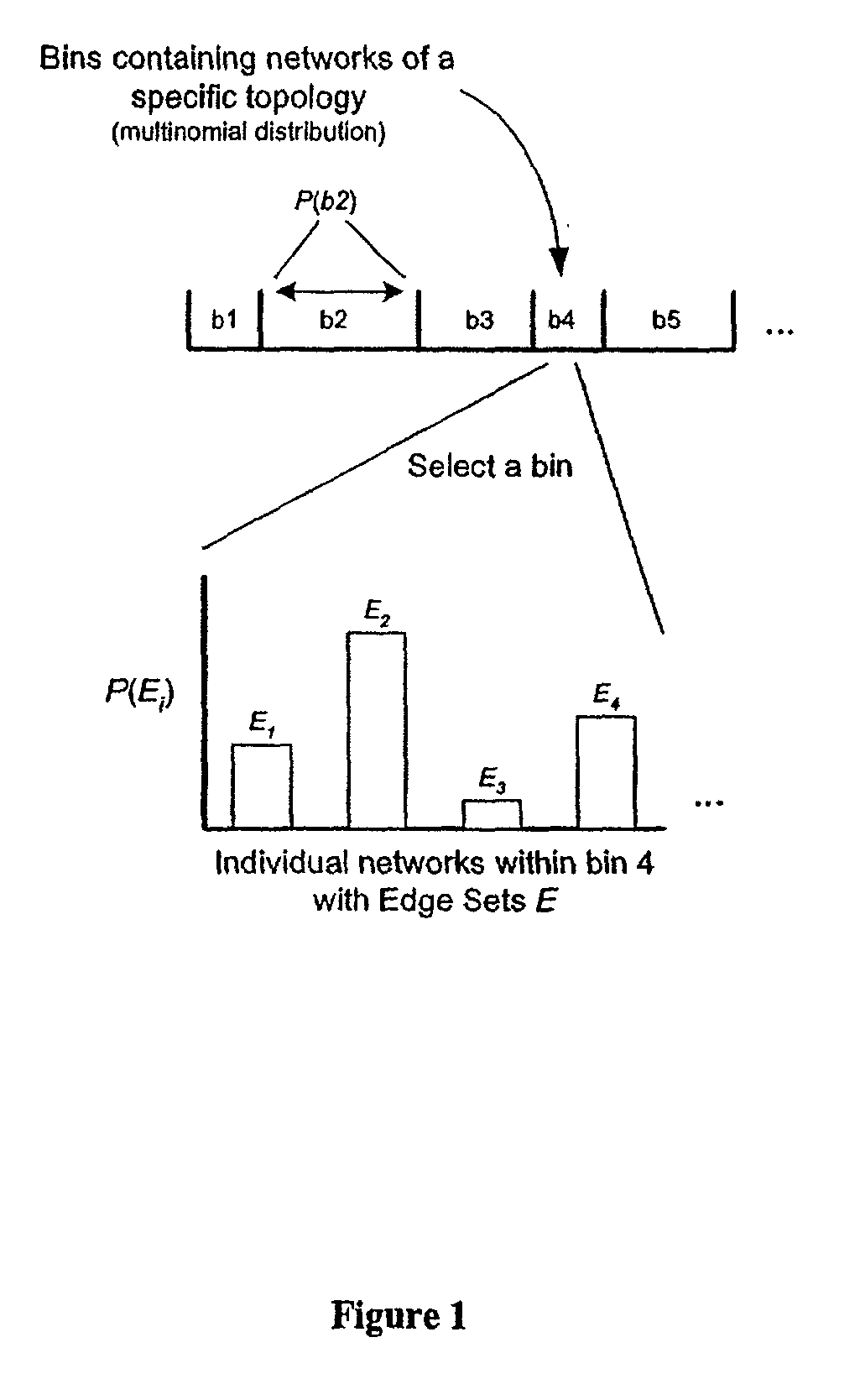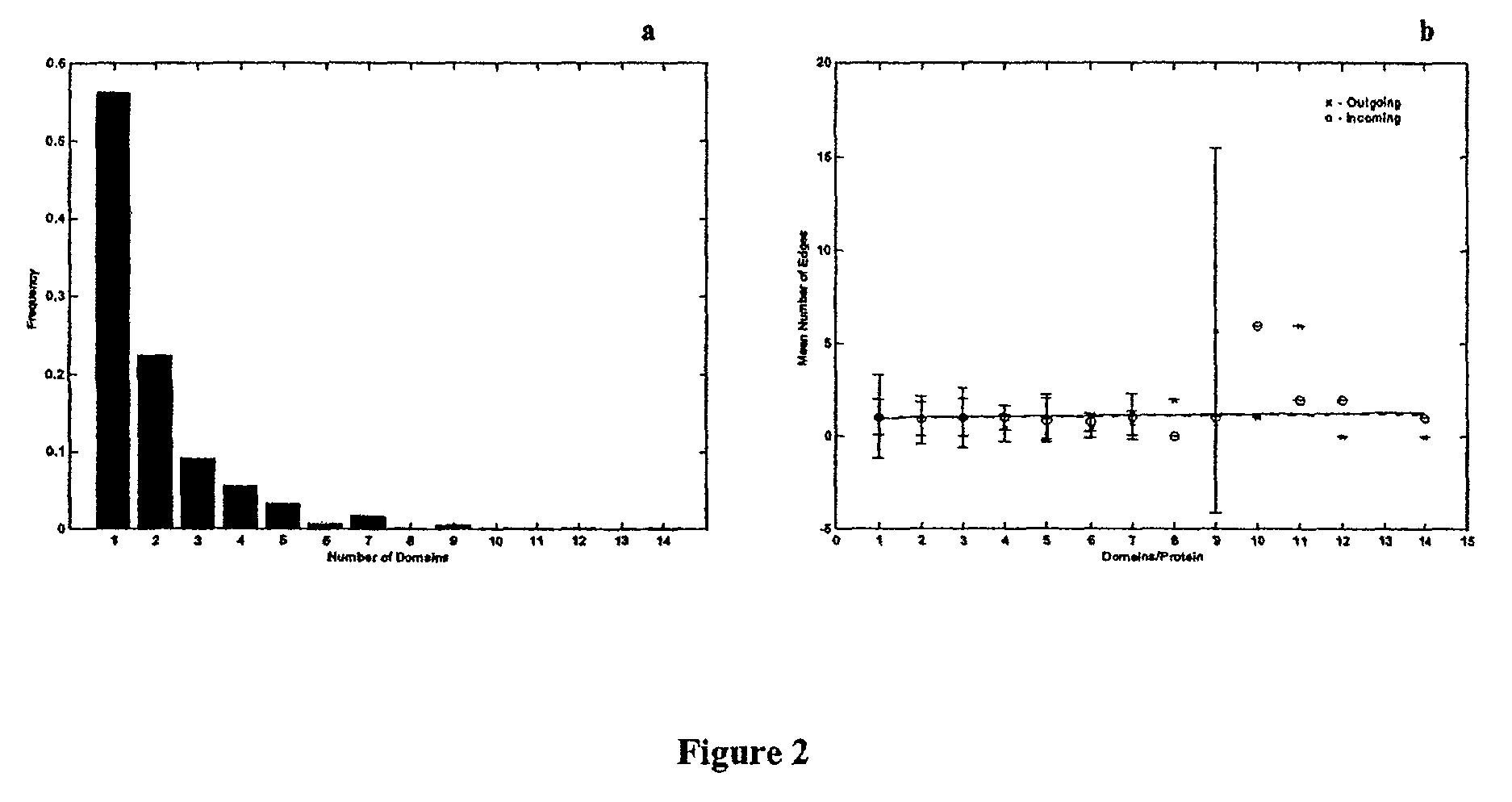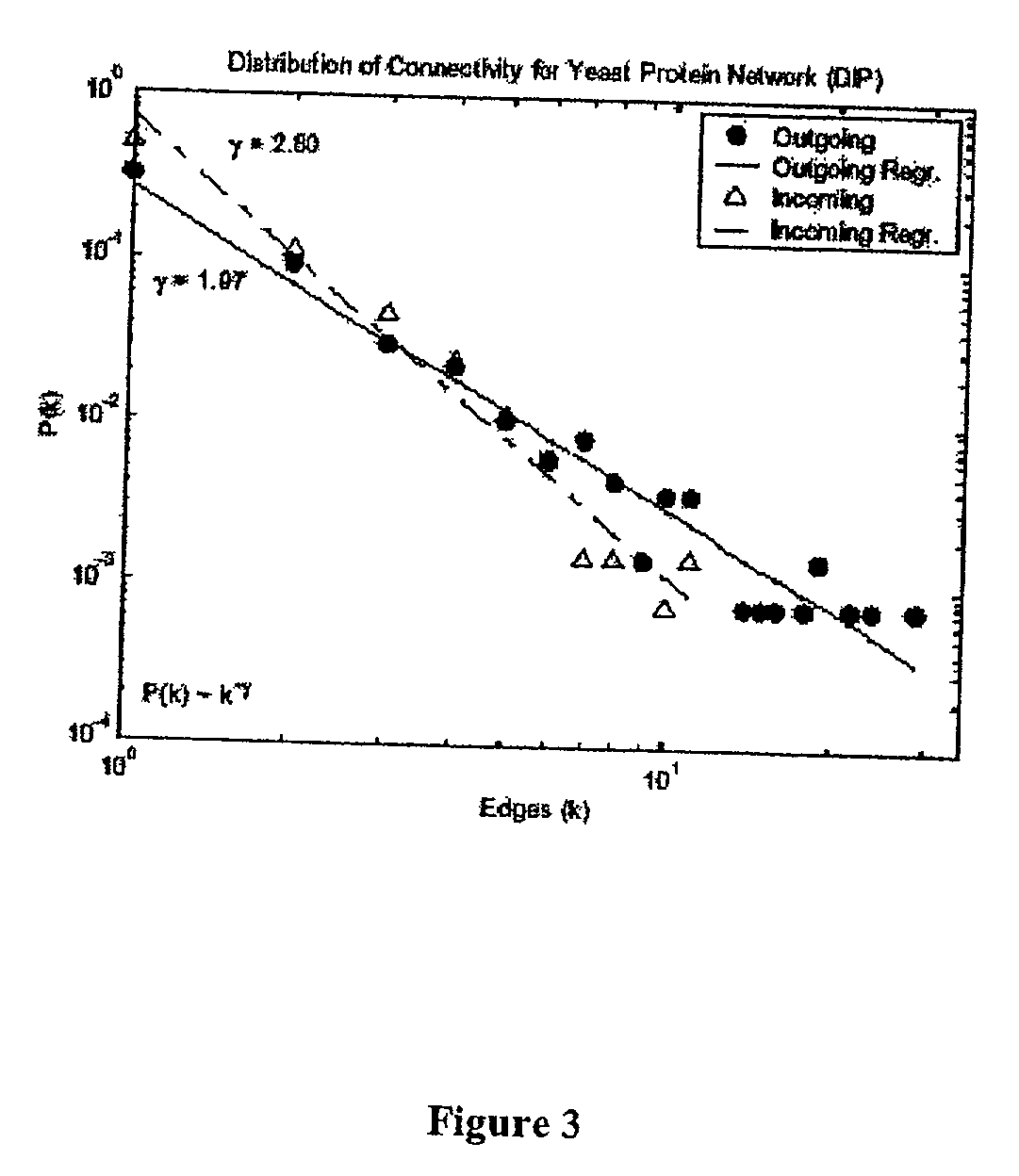Method for the prediction of molecular interaction networks
a molecular interaction and network technology, applied in the field of molecular interaction network prediction, can solve the problems of relatively little understanding of interactions between known genes and proteins, lack of data on the mechanism, rate, and even existence of genes and proteins, and transition from a linear, one-dimensional sequence of genes to an integrated, multi-dimensional model of metabolic and regulatory networks
- Summary
- Abstract
- Description
- Claims
- Application Information
AI Technical Summary
Problems solved by technology
Method used
Image
Examples
Embodiment Construction
[0018] Biological networks comprise proteins, nucleic acids, and small molecules as primary interacting elements. Functional areas that provide the ability for one molecule to interact with another are generally referred to as domains or motifs. For example, subsequences of DNA where specific proteins bind are one class of domain, as are the amino acid subsequence responsible for binding activity within the protein. Since genes are passive carriers of information, and because there are relatively few enzymatic or structural RNA molecules, the majority of important biological functions are carried out by proteins. Interactions between proteins are of particular interest, as they are responsible for the majority of "active" biological function. To date, protein-protein interactions are also the predominant type of interaction with significant quantities of supporting experimental data sets. Being linear sequences of amino acids at the level of primary structure, at the functional leve...
PUM
| Property | Measurement | Unit |
|---|---|---|
| nucleic acid | aaaaa | aaaaa |
| Basic Local Alignment Search Tool | aaaaa | aaaaa |
| frequency | aaaaa | aaaaa |
Abstract
Description
Claims
Application Information
 Login to View More
Login to View More - R&D
- Intellectual Property
- Life Sciences
- Materials
- Tech Scout
- Unparalleled Data Quality
- Higher Quality Content
- 60% Fewer Hallucinations
Browse by: Latest US Patents, China's latest patents, Technical Efficacy Thesaurus, Application Domain, Technology Topic, Popular Technical Reports.
© 2025 PatSnap. All rights reserved.Legal|Privacy policy|Modern Slavery Act Transparency Statement|Sitemap|About US| Contact US: help@patsnap.com



